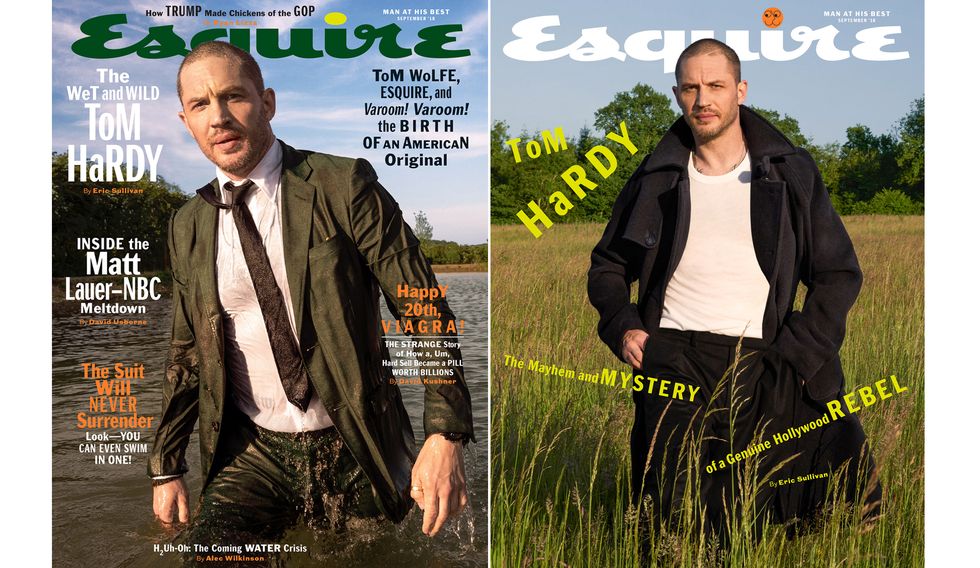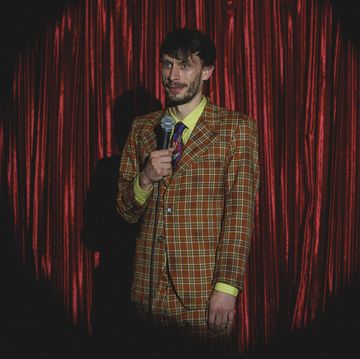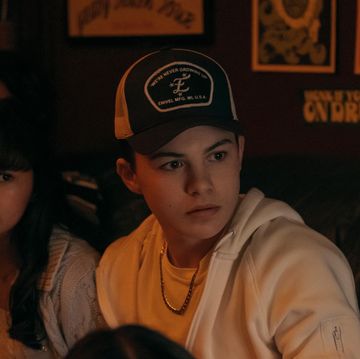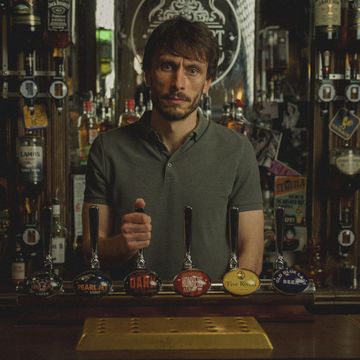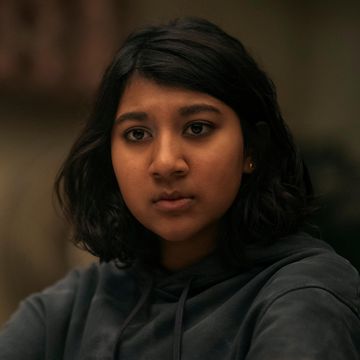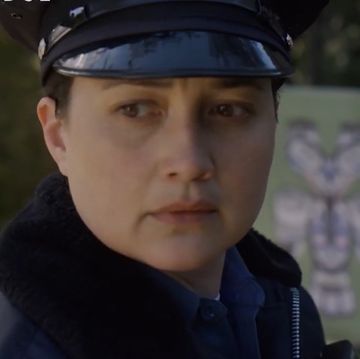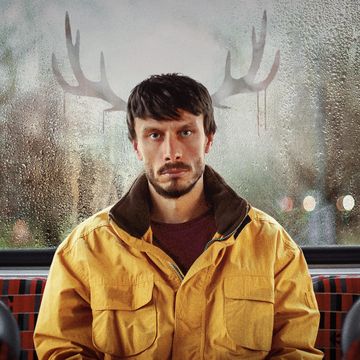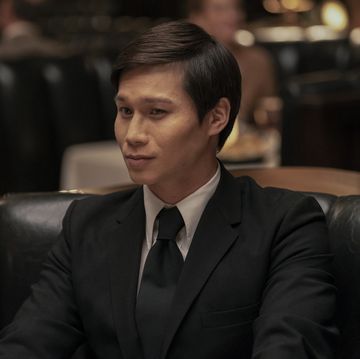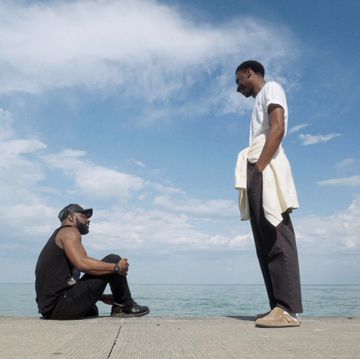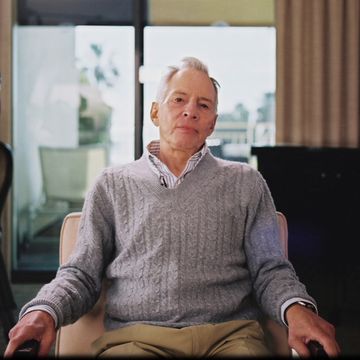Matt Groening will forever be known as the guy behind The Simpsons, now the longest-running prime-time scripted series in television history. Hey, a guy could do worse. But the 64-year-old former cartoonist has never been one to rest on his Emmys: Groening remains intimately involved with every episode of his best-known show (639 at this writing) and has spent the past several years developing a new animated series called Disenchantment (debuting this month on Netflix), set in the mythical kingdom of Dreamland.
Amid a typically busy day shuttling between the L.A. studios where his shows are made, Groening spoke with Esquire about the origins of Disenchantment, his love of Bollywood, and the secret to The Simpsons’ Montgomery Burns-like longevity.
ESQ: What inspires someone with three decades of success to say, “I’m going to start from square one”?
Matt Groening: I just love creating new worlds. I’ve been fascinated since I was a kid by fantasy maps and old Dell crime paperbacks that had maps on the back covers. There was a very spooky poster from 1930 that hung in the den of my parents’ house called “The Land of Make Believe,” by an artist named Jaro Hess. It scared the hell out of me, but I loved it. I actually tracked it down and hung it in my kitchen to scare my children. But it’s always been an inspiration to me. I mean, The Simpsons is its own parallel universe, and certainly Futurama is the same thing. And now Disenchantment is a third one.
How long did it take for this particular universe to take shape in your head?
I started a notebook full of ideas for the show in 2012... or maybe a little earlier. Every time I thought of a different kind of fantasy trope, I’d write it down and see if there was a way of sticking it in the show. I have lists of every kind of small mythical forest creature: gnomes, fairies, imps, goblins, gremlins, trolls, plus a bunch that I can’t remember right now. It’s all there in the notebook. But it’s hard. If you want to tell jokes about elves and dragons and so on and so forth, pretty soon you realize, Oh, every single dragon joke has already been made.
But you always intended to create another animated series?
Oh, yeah. I think about ideas for different TV shows all the time. What holds me back is knowing how hard it is to actually pull them off, and whether I really want to commit myself to something that keeps on going. You know, my comic strip Life in Hell lasted 33 years. The Simpsons is 29 years and running. Futurama didn’t last as long. [It ran for seven nonconsecutive seasons.] So I have to really want to do it for me to plow forward.
I hear you drew inspiration from some rather obscure sources for Disenchantment.
I don’t think they’re obscure, but other people could consider them obscure. So in a given show there might be homages to Buster Keaton and to an Indian filmmaker named S. S. Rajamouli, who has made some of my favorite films of the last decade. I particularly recommend a movie called Magadheera. I’m getting very obscure now. But this stuff just makes me so happy.
When it first aired, The Simpsons was viewed as wildly subversive and even controversial. Since then, the culture has become crasser but also more politically correct. Are the shifting boundaries of humor in 2018 something you considered?
You never know. You work for a couple years on something and you don’t know what it’s going to be or how it’s going to be perceived. That’s the hardest thing about animation, by the way: getting the tone right. Especially in a world that is completely made-up. The challenge becomes whether you can get people to climb on board and make them forget for a moment or two that they’re watching a cartoon and get caught up in the feelings.
Paradoxically, as I get older, I am less interested in fantasy and more interested in reality. And by reality, I mean real emotions. The trappings of the show I’m amused by, but what really gets me going is the stuff with heart.
Obviously being on a platform like Netflix, as opposed to network TV, gives you more freedom.
I still think about boundaries, because there are some. Actually, one of the nice things about conventional television is that the boundaries are clear on what you can show and what you can say. With Netflix, they’re very encouraging for us to do whatever we want to do. Still, we found early on that there’s a certain kind of dirty joke that within this show just didn’t feel right. But who’s to know what people will be bothered by?
As of this past April, The Simpsons became the longest-running prime-time scripted show in television history. How much longer do you see it going?
The work itself is very real. There’s very little strutting around the studio saying, “Look how long we’ve been on the air!” It’s mostly just doing the job, and it’s really fun. And if I could point out something about The Simpsons that the general fans might not know: It has turned into a forum for different kinds of animated humor. There’s not a single kind of joke. We do jokes that are about animation, we do parodies, we do topical humor, we do family-sitcom jokes, we do all kinds of different approaches to humor. And as a result, it’s not the same as what it used to be. But to me, it’s also not repetitious, because we’re always exploring new things. Banksy did the storyboards for a couch gag.
Given that you don’t do many interviews, I get the sense you would rather people know your work than the man behind it.
Oh, yeah. This is the best kind of fame. If I looked like Bart Simpson, it’d all be over for me.
This article appears in the September '18 issue of Esquire.



